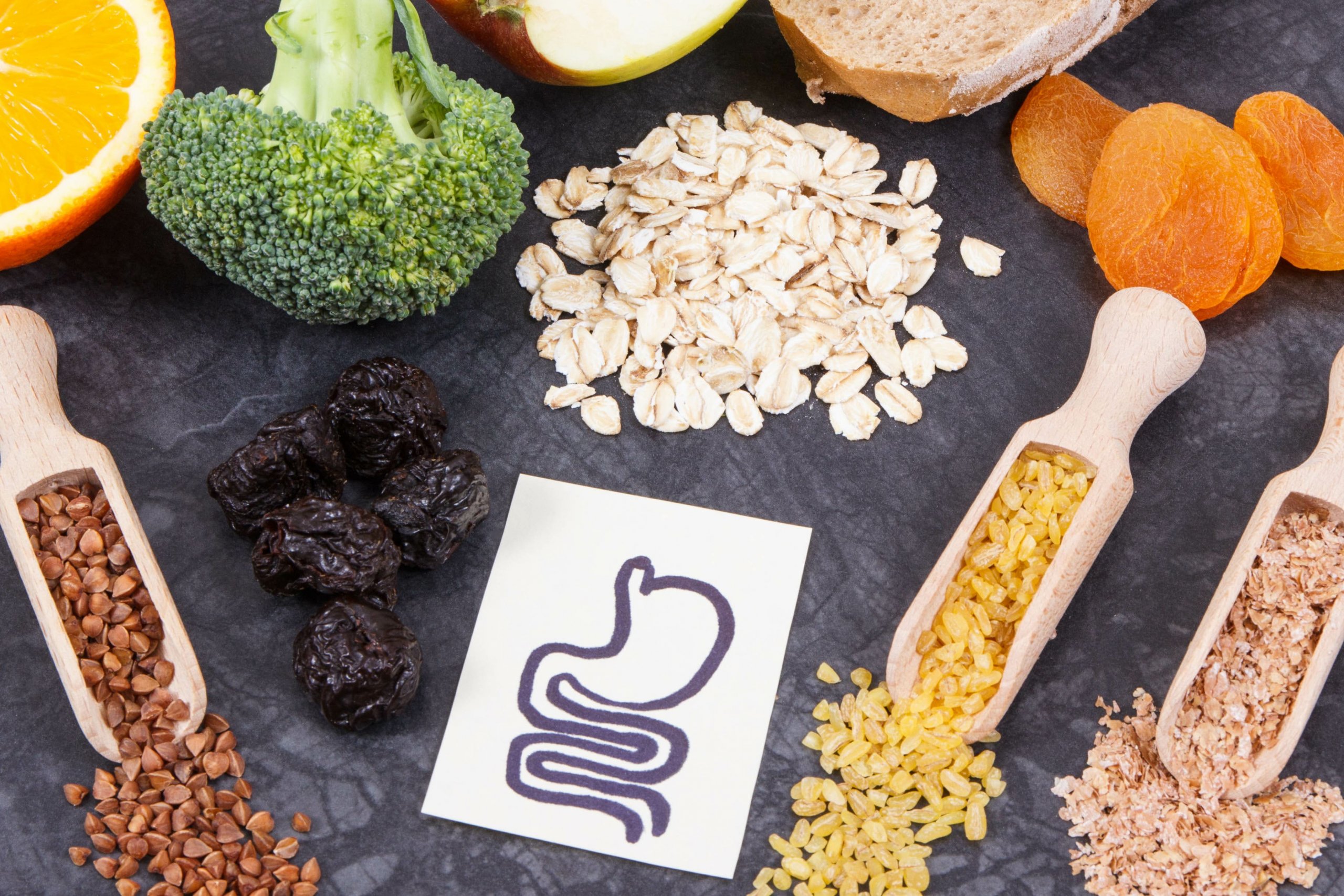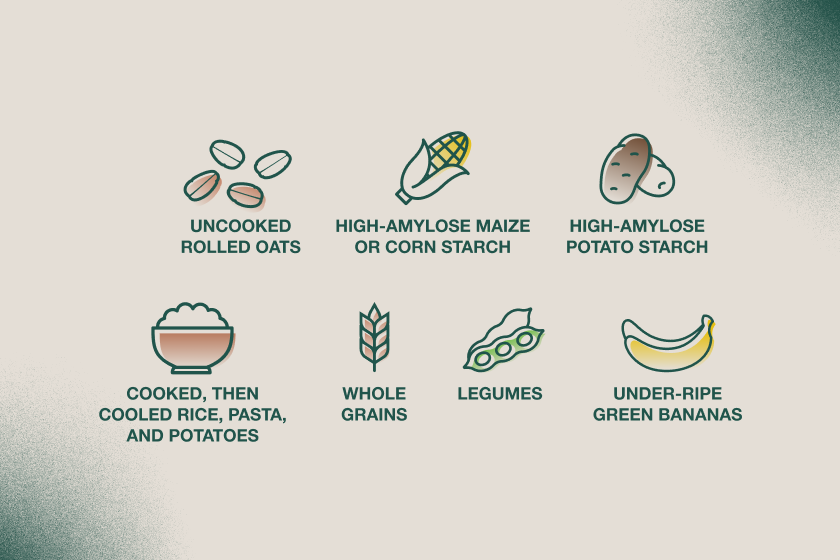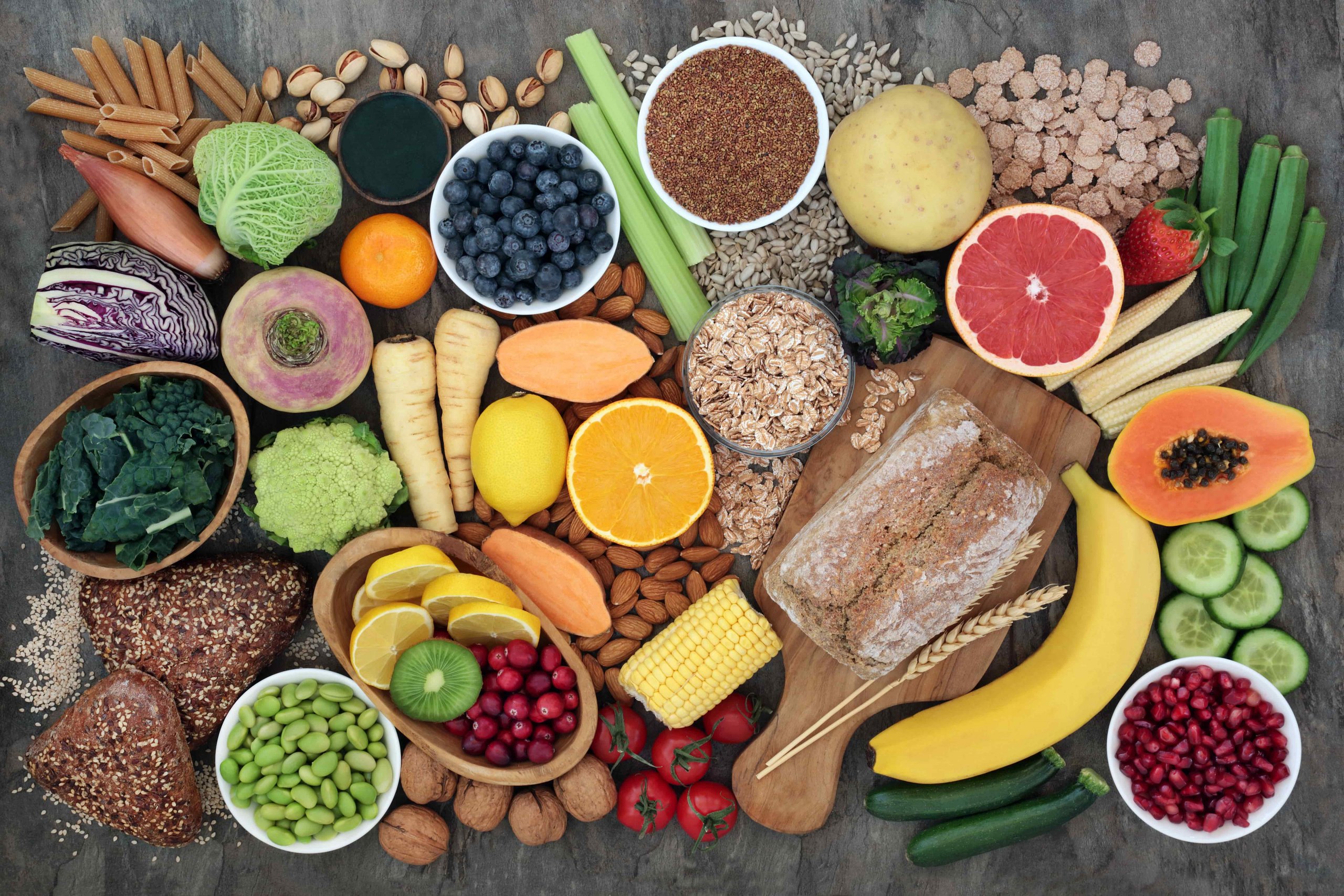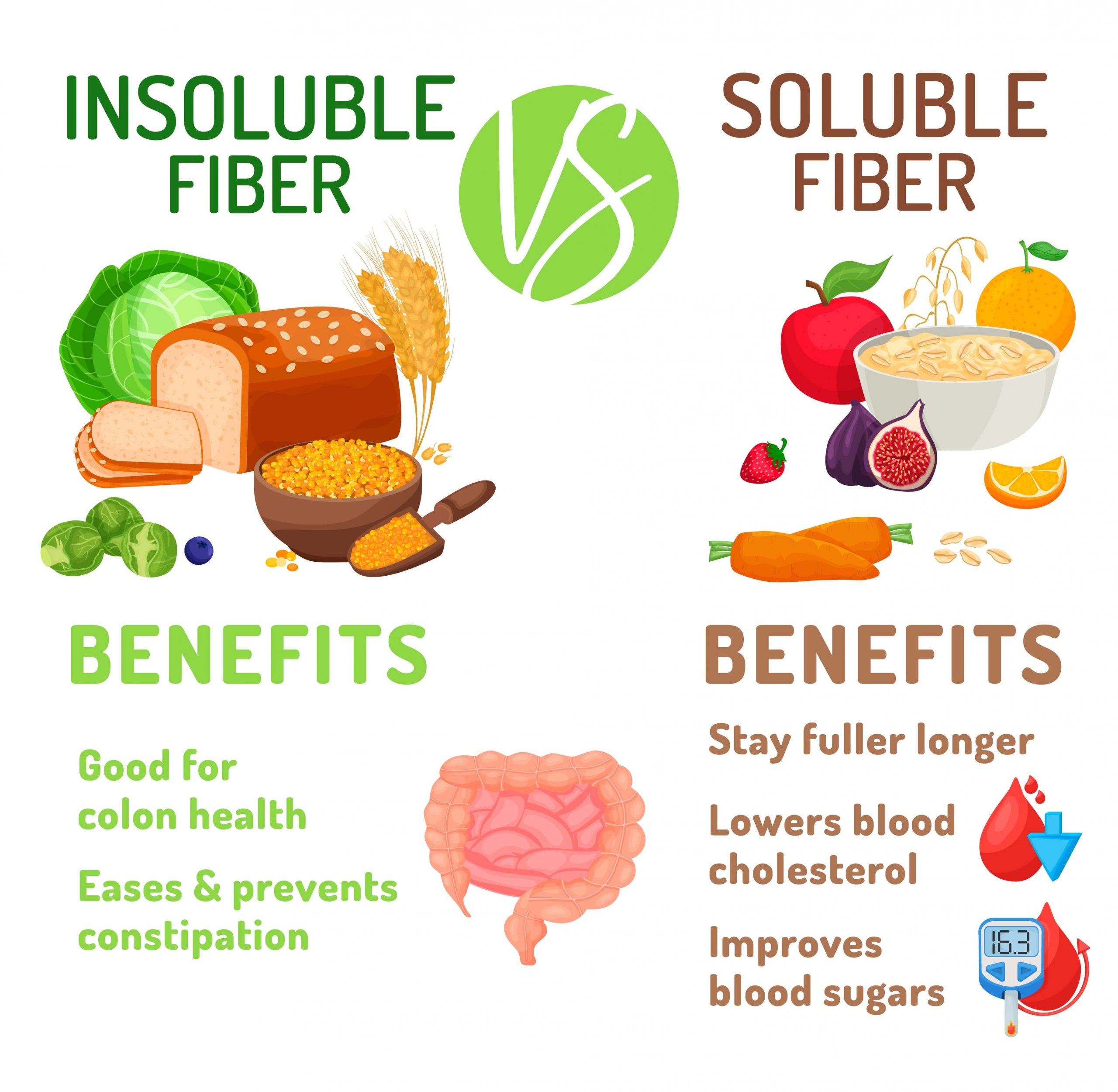In this article, we’ll cover the following topics:
- A Quick Note on Digesting Fiber
- What Is Resistant Starch?
- Key Differences Between Fiber vs Resistant Starch
- Resistant Starch vs Soluble Fiber vs Insoluble Fiber
- Incorporating Resistant Starch & Fiber into Your Lifestyle
Like a Venn Diagram of gut-healing goodness, the differences (and the overlaps) between resistant starch and fiber are super intertwined — and interesting!
In truth, many of the differences are semantic. You’ve got a lot of different names to describe many similar things: dietary fiber, functional fiber, soluble fiber, insoluble fiber, prebiotic fiber, fermentable fiber, resistant starch, and more.
So, what gives??
Well, “fiber” is like the matriarchal mother hen blanketing her little chickadees. It’s the big, broad catchall to describe a diverse group of plant-based carbohydrates that the human body can’t digest.
Within fiber’s purview, there are lots of different types and subtypes out there, which vary based on things like:
- Solubility (how much they’re absorbed in water)
- Viscosity (how thick and/or gelatinous they become with water)
- Fermentability (how well they nourish and feed the bacteria in your gut)
In general: dietary fiber of all shapes, sizes, and solubilities is good for you. And incorporating a diverse mix of fibers is an effective (and highly encouraged) way to promote more microbial diversity in your microbiome. Which goes a long way toward improving your gut health, and by extension, your overall health!
A Quick Note on Digesting Fiber

Before we dive in, there’s one important thing to remember about fiber. When you see something like “your body can’t digest fiber” it’s tempting to assume that’s a bad thing. Why, after all, would you want to ingest something that your body can’t process?
But the truth is that your body is only partially your body. Your cells are vastly outnumbered by trillions of bacteria and microorganisms living within you. And just because your body’s digestive enzymes can’t break down something doesn’t mean your gut microbes can’t.
In fact, your gut microbes crave fibrous foods — aka, the “roughage” in certain plants. These are their food sources. When your gut microbes are well fed, their numbers propagate and thrive. When their populations thrive (with lots of microbial diversity), you have what’s called a balanced gut. And a balanced gut is the gateway to better overall health.
Now that we have that clarified, let’s get down to business.
Resistant Starch vs Fiber: What’s the Difference You Need to Know About?
Resistant starch and fiber (including insoluble fiber and soluble fiber) have a lot in common, but they’re not exactly the same.
What is Resistant Starch?

Resistant starch is a unique type of fiber with some uniquely life-changing health benefits. How resistant starch works is fascinating.
First off, there are 5 different types of resistant starch, and you can find resistant starch in a variety of foods, including:
- Unripe bananas
- Raw potatoes and/or high-amylose potato starch
- Whole grains (such as oats, barley, high-amylose corn)
- Beans, lentils, and other legumes, nuts, and seeds
- Cooked-then-cooled starchy carbs like rice, pasta, and potatoes
What all of these foods have in common is… well… they’re starches.
They’re also very difficult to digest. In other words, they’re resistant to digestion — hence the name “resistant starch.”
Because of this, resistant starch arrives in your colon mostly intact and unstripped of all its nutrients. Gut bacteria then feed on it. When they do, this fermentation process unleashes numerous beneficial byproducts including short-chain fatty acids (SCFAs). SCFAs — like butyrate especially — are incredibly important compounds for human health.
Among other things, SCFAs have shown to:
- Promote feelings of fullness (through the production of the GLP-1 “hunger hormone”) [1]
- Keep the cells in your intestinal tract (or your gut wall) healthy (2)
- Help promote a healthier microbiome (3)
- Benefit the brain and nervous system (4]
- Decrease inflammation (5)
- Reduce allergy symptoms (6)
- Improve sleep (7)
In sum: resistant starch is a type of starchy fiber. It’s found in a variety of plant-based foods. And it’s a particularly good source of prebiotics (aka, fermentable fuel) for the probiotic microorganisms in your gut. As these probiotics feast on prebiotics, this releases postbiotic reactions. And THAT’s where the gut-healing, health-boosting magic happens.
Prebiotics + Probiotics = Postbiotics
All you really need to know, though, is that resistant starch is very good for you.
Key Differences Between Fiber vs Resistant Starch

The simplest difference? All resistant starch is fiber. Not all fiber is resistant starch.
As mentioned earlier, fiber can run the gamut of many different plant-based carbohydrates. It’s, of course, found in fruits and vegetables. This is what most people think of when they hear the term fiber. These are certainly vital food groups, and we could always use more fruits and veggies.
However, the plant fibers many people don’t get enough of are actually in the realm of whole grains, seeds, nuts, and legumes.
As ever, the key is to incorporate diversity of fiber in order to maximize nutrients.
Resistant Starch vs Soluble Fiber vs Insoluble Fiber

It’s worth bringing solubility back into the conversation. Oftentimes, you’ll hear people talk about soluble fiber vs insoluble fiber.
Soluble fiber is a type of fiber that dissolves in water to form a gel-like material. It’s predominantly found in plants like oats, peas, beans, apples, citrus fruits, carrots, and barley. People often associate soluble fiber with reducing blood sugar spikes and lowering cholesterol and glucose levels.
Insoluble fiber, meanwhile, doesn’t dissolve in water. And it isn’t digested easily. Instead, it travels through your digestive system — almost acting like a broom or a Swiffer — picking up other undigested materials along the way to increase stool bulk and promote better bowel movements. Insoluble fiber is found in a variety of foods such as: whole grains, nuts, seeds, beans and other legumes, as well as vegetables like cauliflower, green beans, and potatoes.
Resistant starch actually shares characteristics with BOTH insoluble and soluble fiber. Like insoluble fiber, RS is “resistant” to digestion and passes into the colon undigested. Once it’s there, however, it behaves similarly to soluble fiber in that it’s fermented by the good bacteria that live there.
We know what you’re thinking: “Resistant starch sounds like a Super Fiber!” And you’re right. Resistant starch is a Super Fiber. Whether it gets its own Marvel movie or not, the jury’s still out. But incorporating more RS into your diet will certainly have some blockbuster benefits.
Incorporating Resistant Starch and Fiber Into Your Lifestyle: Why You Should

Want to hear some Debbie Downer news? Most people fall drastically short in terms of their fiber consumption.
As in, only about 5% of Americans consume enough fiber. And the average American gets only about HALF of the daily recommended amount (about 15 grams per day, instead of the recommended 25-38 grams). [8]
What’s more, most Americans also only get about 3-8 grams of resistant starch per day. [9] Which isn’t enough, when you consider that studies show health benefits of resistant starch occur with a daily intake of at least 20 grams. [10]
If you’re reading this right now, there’s a very high statistical chance you have a fiber deficiency.
Which is not ideal.
Numerous studies have shown that fiber consumption can support a whole host of very important bodily systems and functions, including: weight loss, heart health, blood sugar regulation, digestive health, and maybe even longer lifespans! [11]
Parting Thoughts on Resistant Starch vs Fiber

Fiber comes in all shapes and sizes. It’s a superfood of the highest order, no matter its solubility or viscosity.
Resistant starch is just one (profoundly good-for-you) form of fiber. But, in general, all forms of dietary fiber have distinct health benefits. The key is to incorporate a diverse range of fibers and whole foods in order to encourage microbial diversity in your gut.
If you think you’re not getting enough fiber or resistant starch in your diet, then Supergut can help. Our proprietary blend of gut-healing prebiotic fiber has been clinically shown to improve blood sugar control, boost digestive health, and even promote weight loss.








